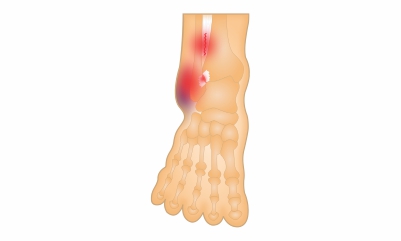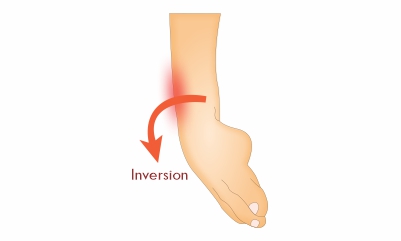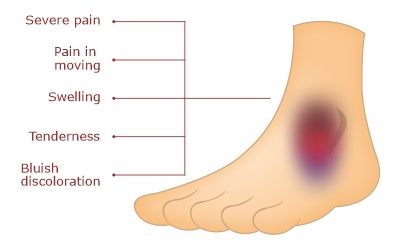High Ankle Sprain
High-ankle sprain occurs when the upper ligaments of the ankle joint are injured or sprained. It is also called syndesmosis injury.
The ligaments join the bone-to-bone and these upper ligaments connect the tibia bone to the fibula bone. During walking and running, these ligaments provide ankle joint stability.
Any sudden twisting or rotating movement of the joint of the ankle leads to the upper ligaments injury.


Causes
- Sudden rotating and twisting injury while walking or running
- High impact activities
- Fall on a twisted ankle
- Trauma
Signs and Symptoms
- Severe pain at injury site
- Swelling around the injured part or mostly above ankle
- You will experience pain during weight-bearing on the injured ankle
- Pain is severe while climbing the stairs or going downstairs
- Bluish discoloration in the periphery of the ankle joint
- Pain while moving your ankle joint in the upward direction
- Tenderness

Diagnosis
- Physical Examination by your doctor
- X-ray to check for any bony injury or fracture
- MRI is the best and specific investigation to diagnose which ligament is injured and how severe the damage is
Treatment
- Conservative:
-
- Ice fomentation on area that is injured for at least 15 minutes and 3-4 times a day
- Use elastic or compression bandage to support your ankle and this will also help reduce swelling, elevate your ankle on pillows
- Medicines: painkillers and medication to reduce the inflammation like ibuprofen
- Take rest and avoid weight placement. The doctor can also prescribe ankle support or brace
- During the rehabilitation process, the physiotherapists guide the patient on exercises that strengthen the ankle muscles

-
- Operative
- Syndesmosis screw fixation
- Syndesmosis fixation with suture button
Recovery time
- Can vary from 6 weeks to 3 months to recover and move back to normal activities following an injury.
